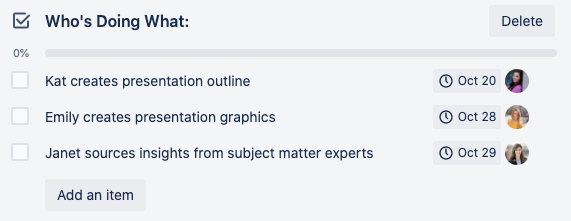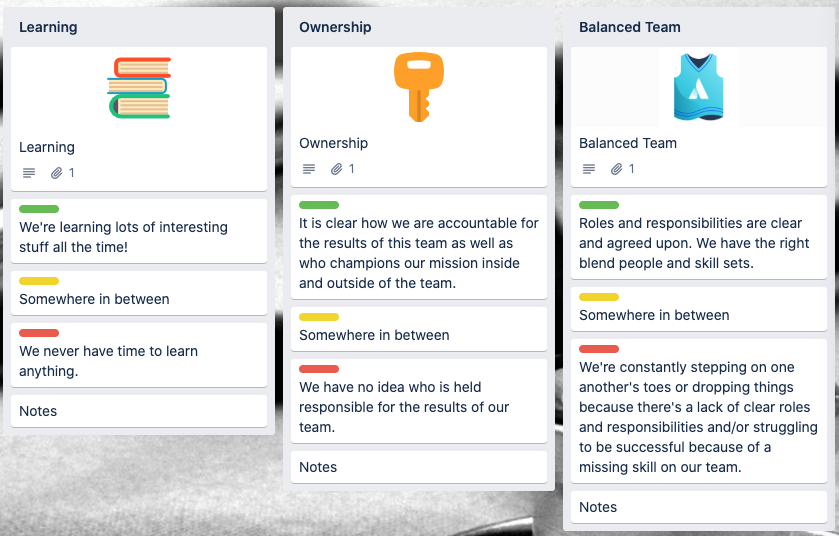A reported 39% of employees believe people in their organization don’t collaborate enough. Yet, 67% of people say spending too much time in meetings distracts them from the responsibilities of their jobs. 57% of employees say they feel isolated at work, but 41% have felt friction or dealt with conflicts while collaborating.
Wait…what? What’s going on here? Do people like collaboration or dread it? Do they want more or less of it?
This is quite the collaboration pickle. The desired dynamics on a team are confusing at best, and the statistics don’t seem to add up.
Needless to say, evening the scales between teamwork and individual work is a whopping challenge. Let’s dig into both sides of this coin and talk about how you can strike a balance that’s just right.
What Happens When Your Team Is Lopsided?
It’s possible to have too much of a good thing. So, whether you prefer to put in your earbuds and crank through your to-do list alone or you love combining efforts with other people, it’s important that you don’t only rely on only one approach.

Too Much Collaboration Can Lead To…
- Wasted time: We’ve all sat through those brainstorming conversations or group work sessions that don’t seem to actually produce anything. That’s one of the biggest complaints about too much collaboration: It can quickly turn into a major time suck, and makes it challenging for team members to handle the day-to-day responsibilities of their jobs.
- Lack of responsibility: Have you ever walked out of an hour-long meeting with no idea of who’s responsible for what? Or been the one who has to carry the weight of an entire project? Yep, sounds familiar. Lack of accountability can be a real problem, and it’s likely why 9 out of 10 employees say accountability is one of the top development needs they want to see at their organization. “When assignments are given to multiple individuals and they are left to collaborate on the entirety of it, this does not give enough ownership and slows down the deliverable,” explains Kristen Ettinger, Director of Customer Success at Salesforce.
- Groupthink: Finally, multiple brains aren’t always better than one. “Rule by committee and groupthink kill creativity and breed stasis,” says Mike Schneider, VP of Marketing at Muck Rack. One study found that groupthink on project teams can lead to flawed decision-making. That’s because when people are so eager to conform, they zip their lips and don’t share valuable feedback or insights.
Too Much Independent Work Can Lead To…
- Stunted learning: Team members can learn a lot from each other—provided they have the opportunity to do so. A study of 48 college students published in the Journal of Technology Education found that collaborative learning actually boosts critical thinking. Unfortunately, too much independent work means your team could lose out on those benefits. “When individuals are solely working on their own customer challenges and creating their own presentation materials, for example, no one is learning from each other,” says Ettinger.
- Decreased performance: That leads to even more bad news, in the form of lower-quality output. When collaborating, team members can leverage their individual strengths to benefit the whole. “Individual talent is chump change compared to the benefits that can come from assembling a team that can work effectively together,” says Schneider. When you spend too much time working in a vacuum, team members can’t supplement each other’s weaknesses, which means performance can suffer.
- Burnout: Let’s face it—carrying the load by yourself can be exhausting. But, that’s the only choice you have if your team doesn’t emphasize or prioritize collaboration. Burnout is a persistent issue, with 77% of respondents in a Deloitte survey saying that they’ve experienced burnout at their current job. While collaboration alone isn’t the solution to burnout, it’s helpful if employees don’t always feel solely responsible for herculean projects.

Walking The Fine Line Between Individual Work And Teamwork
Yikes. There’s the potential for fallout if you head too far in either direction.
So, where does that leave you and your team? How can you do this delicate dance and make sure your team reaps the benefits of collaboration—without feeling like they can never get a second alone for focused work? Here are four strategies:
1. Adopt The 80/20 Rule
Typically, the 80/20 Rule (also known as the Pareto Principle) applies to productivity. It asserts that 80% of results come from only 20% of the effort.
However, Ettinger has tweaked the 80/20 Rule to apply to collaboration on her own team. “An employee will spend 80% of their time on individual work, and 20% on project-based collaborative work,” she says.
If your team works a standard 40-hour workweek, some simple math reveals that they’d spend roughly eight hours working together each week—and the other 32 hours would be dedicated to their individual tasks.
Ettinger shares that this doesn’t have to be down to the minute (so go ahead and put down your calculator), but these rough metrics are helpful. “It’s a good way to ensure collaboration is happening while the bulk of my team’s time stays dedicated to individual endeavors,” she adds.
2. Define The Time, Place, And Methods For Collaboration
Things get busy, and collaboration is one of those things that slides to the back burner (and even off the stove) if we don’t consciously dedicate time to it. One study of school teachers found that time was one of the biggest barriers to successful collaboration—teachers just didn’t have the necessary hours to dedicate to it.
Much like any other important obligation, teamwork needs to be baked into your calendar. “A way that we balance collaborative and individual work is by defining when and where certain types of collaboration should generally occur,” advises Schneider.
Schneider and his team—who work on one-month sprints, with regularly-scheduled team syncs—have even gone so far as to establish a shared system for:
- What requires a meeting and what doesn’t
- What they brainstorm asynchronously in Trello or on a shared doc
- What they can chat about in Slack
This roadmap helps his whole team ensure that their live, real-time collaboration sessions tackle the most important subjects (so they don’t unnecessarily eat up time). It also helps reduce random requests to collaborate that can throw his team off track.
While Schneider says spontaneous collaboration does have its time, place, and benefits, those ad-hoc requests shouldn’t monopolize anybody’s time. “What we’ve tried to cut down on are avoidable, unexpected requests to jump in and collaborate by working from a common sprint board and clearly documenting what does and doesn’t warrant feedback at what times.”
3. Establish Clear Roles And Responsibilities
Let’s say you recently had a brainstorming session where you and your team discussed a handful of things you want to accomplish in the next week.
But, it soon becomes obvious that nobody is going to step up to the plate on those action items. You take matters into your own hands, and what was supposed to be a collaborative effort quickly turns into a one-sided nightmare.

The not-so-secret sauce in this situation is clarity. Everybody on the team needs to know what their role is, what they’re responsible for, and what goals they need to meet. When that happens, even their individual work becomes far more cohesive, because they understand what they need to do and how their assigned tasks contribute to the bigger picture.
In his research of 25,000 supervisors and managers, Ferdinand Fournies found that the number one reason people don’t do what they’re supposed to is because they don’t actually know what they’re supposed to do. Before you write that off as a myth that doesn’t apply to your team, take note that in a report from Gallup, half of employees admitted that they don’t know what is expected of them at work.
“I think it can be easy for a manager to outline the project and assign it to the entire group, but it is important to help set owners for the various components.” Ettinger says.
With checklists and card assignments, Trello can help you clarify who’s taking care of what. For example, in previous retrospectives, Schneider’s team mentioned that clear ownership was a struggle. A card would have a bunch of friendly faces, but no overall owner or point person for specific steps.
“To solve this, we have an additional Custom Field for ‘project manager’ and standard, easy-to-copy checklists with who should do what already mapped out,” he says. Trello’s Advanced Checklists, available to Business Class subscribers, help you get down to the nitty gritty, as you can set assignees and due dates to each individual checklist item.

In short, don’t underestimate the importance of clarity. Assigning action items and owners boosts both your collaborations and your individual work. They both feed each other.
4. Regularly Collect Feedback
Not sure how your team members are feeling about the balance between collaboration and individual contributions? The solution is simple: ask them.
Ettinger mentioned that she dedicates a portion of her one-on-one meetings with employees to check in on how they’re feeling and to encourage a strong feedback loop. If there’s a specific collaborative project happening, she’ll ask how the project is going and if there are any challenges she can help solve.
“I also check in to see how the employee’s overall bandwidth is trending to determine whether or not I can add another collaborative project to their plates,” she adds.
While there are bound to be some overarching themes, this also helps you discern individual preferences. Maybe one person loves frequent, collaborative projects, while another feels that they’re most focused and productive when they can get some uninterrupted time alone.
You can formalize this process a little more by running a team health monitor. It will match your team up against the eight attributes of healthy teams:
- Full-time owner: The project has one lead who is responsible for its success
- Balanced team: Roles and responsibilities are clearly agreed upon
- Shared understanding: The team understands why they’re here and what problem they need to solve, and they share a sense of trust
- Value and metrics: The team knows what success with this project looks like
- Proof of concept: The team has a demonstration of what problem needs to be solved and why
- One-pager: The project is summarized in a one-pager and shared with the entire team
- Managed dependencies: The team understands who they depend on and who depends on them
- Velocity: The team is making incremental progress and learning lessons along the way
You’ll read each attribute and definition to your team, and then have them silently vote (make them cover their eyes!) on how your team matches up with each attribute by giving a thumbs up (green), sideways thumb (yellow), or thumbs down (red).
If you’re doing this remotely, use our Trello template where team members will add their avatar to the color they agree most with. Look specifically for red cards that have a lot of avatars assigned to them. Those are areas you need to focus on improving.
The above are just a few of many ways you can collect feedback. The point is that you don’t need to take guesses about the perfect balance of teamwork and independent work—your team should be able to loop you in on what works best for them.
“At the end of the day, the most important thing is to have a feedback loop and to always be figuring out how to even the scales,” says Schneider.

Too Much Of A Good Thing
Collaborative and independent work both offer significant benefits. For example, team members can be highly efficient when they’re working alone, but frequently participating in projects together boosts trust and morale.
As with anything, you can in fact have too much of a good thing. If your team is constantly collaborating, they can feel like they’re wasting precious heads-down time. If they’re always working alone, they don’t have the opportunity to learn from their colleagues.
If this sounds tricky, it’s because it is, and there’s not a formula or equation for guaranteeing perfect harmony between team collaborations and individual contributions.
The important thing is to strike a balance that works well for your team. With that in mind, we’ll leave you with some good news: The above strategies can help you do just that.
Next: Struggling To Focus? How To Be Accountable While Working Remotely










































